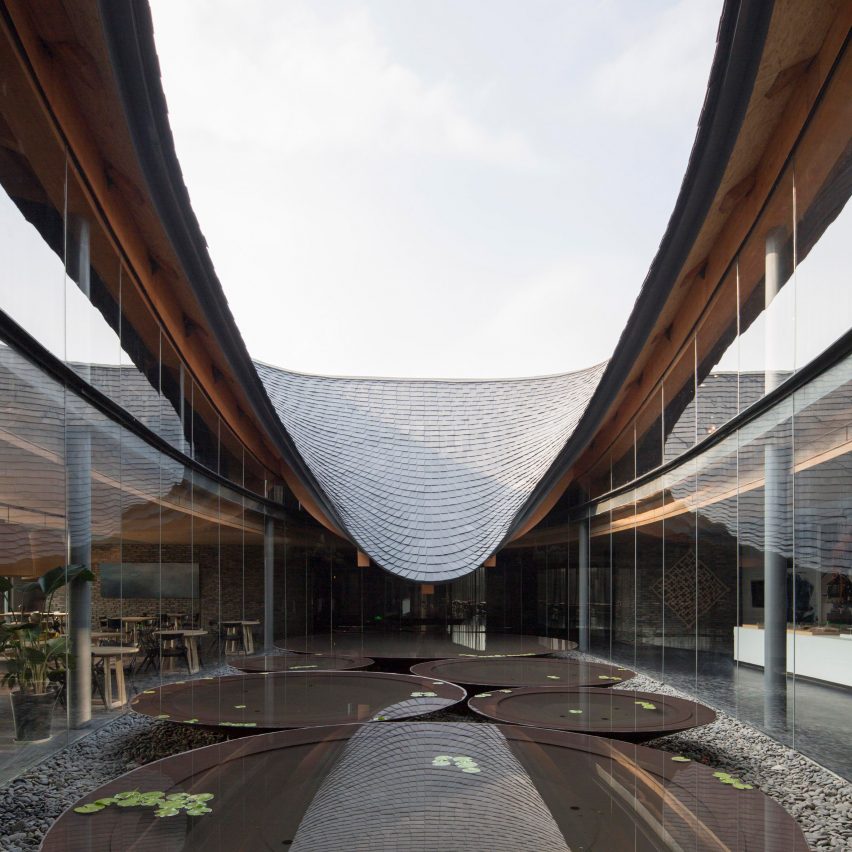
Shanghai studio Archi-Union Architects mimics traditional Chinese calligraphy in its latest project, a rural cultural centre in Sichuan province, featuring a sweeping tiled roof that flows into a central courtyard.
Inkstone House OCT Linpan Cultural Center is located in Anren, an ancient town in Dayi County. Archi-Union Architects designed the building to celebrate the heritage and customs of this area of Western Sichuan.
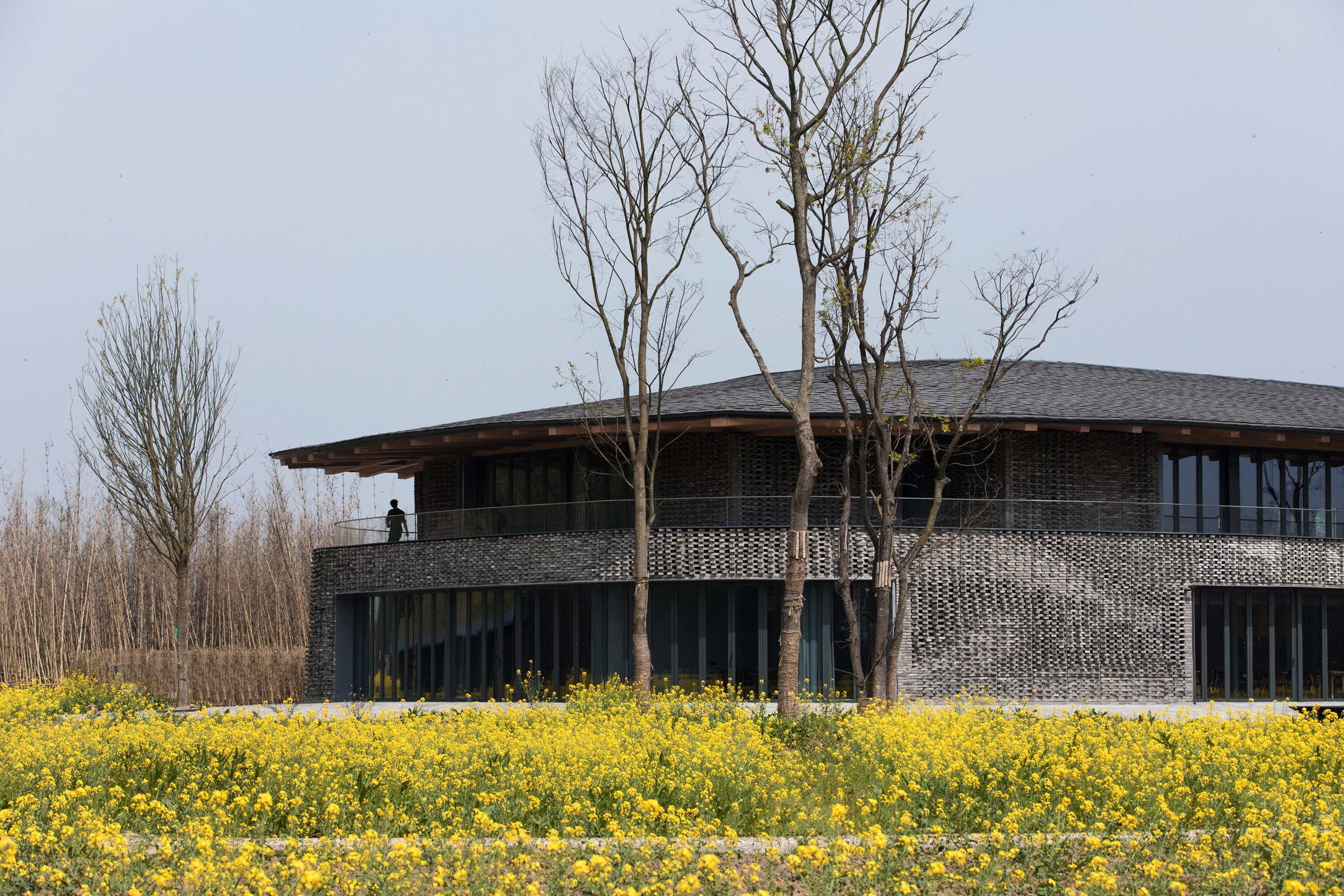
The centre’s form is based on the inkstone used in traditional Chinese calligraphy, which has a water-holding cavity incorporated into a surface used to grind inksticks.
The building’s outline also references traditional Chinese architecture, with a stable base supporting a pedestal roof that is interpreted for the 21st century as a more flexible and dynamic form.
“The roof leans towards the inner courtyard through an elegant curve to connect the boundary of the sky and the earth, and to rethink the elements of the place and their relationship,” said Archi-Union Architects founder Philip F Yuan.
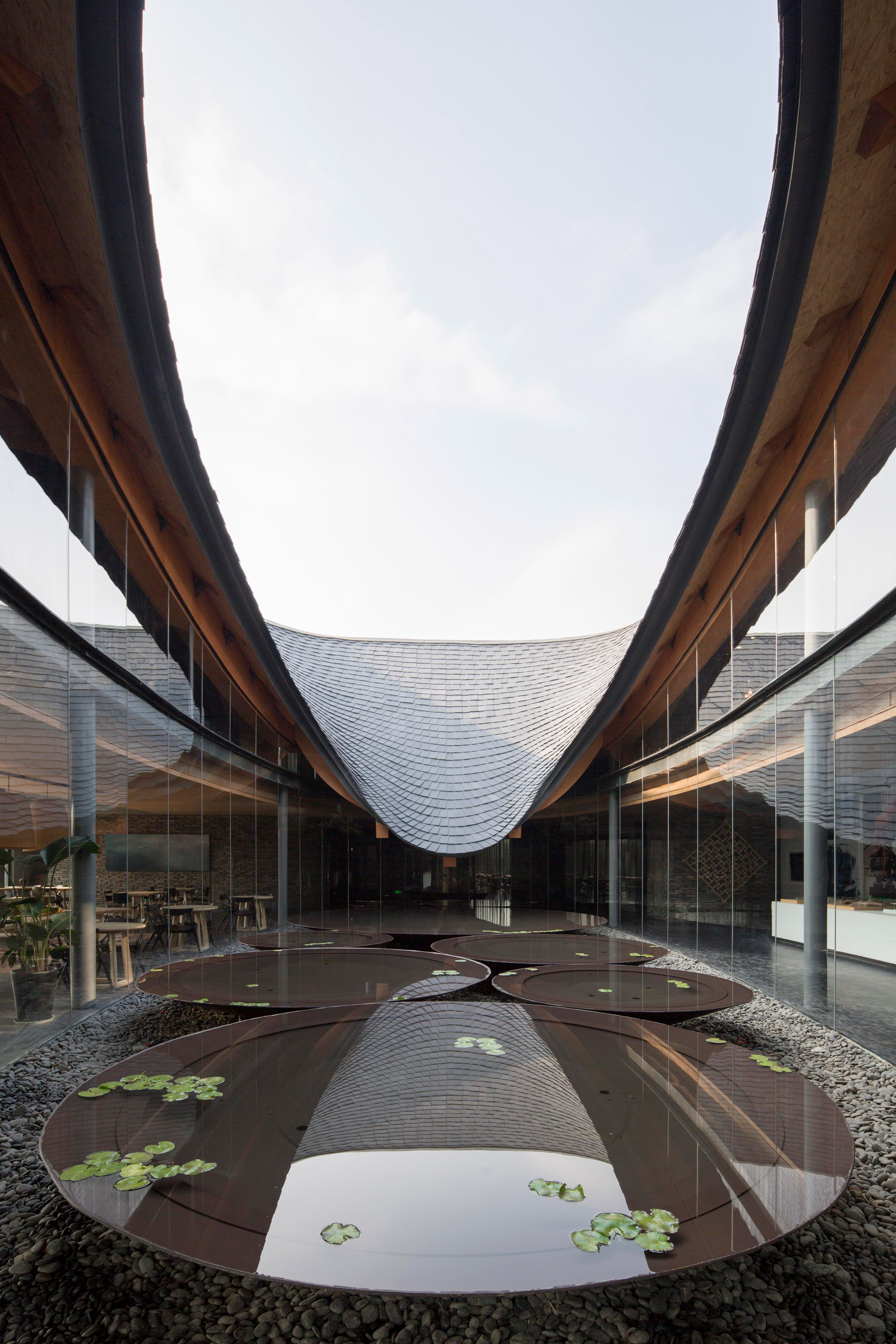
Dayi County’s history is intertwined with the unique Linpan landscape model, which refers to a settlement system based on an ecological farming culture that has existed for millennia.
Linpan comprises smallholdings supported by an ancient irrigation system that created a semi-natural wetland ecosystem shared by people and wildlife. The harmony between nature, human habitation and industry continues to define everyday life on the Western Sichuan Plain.
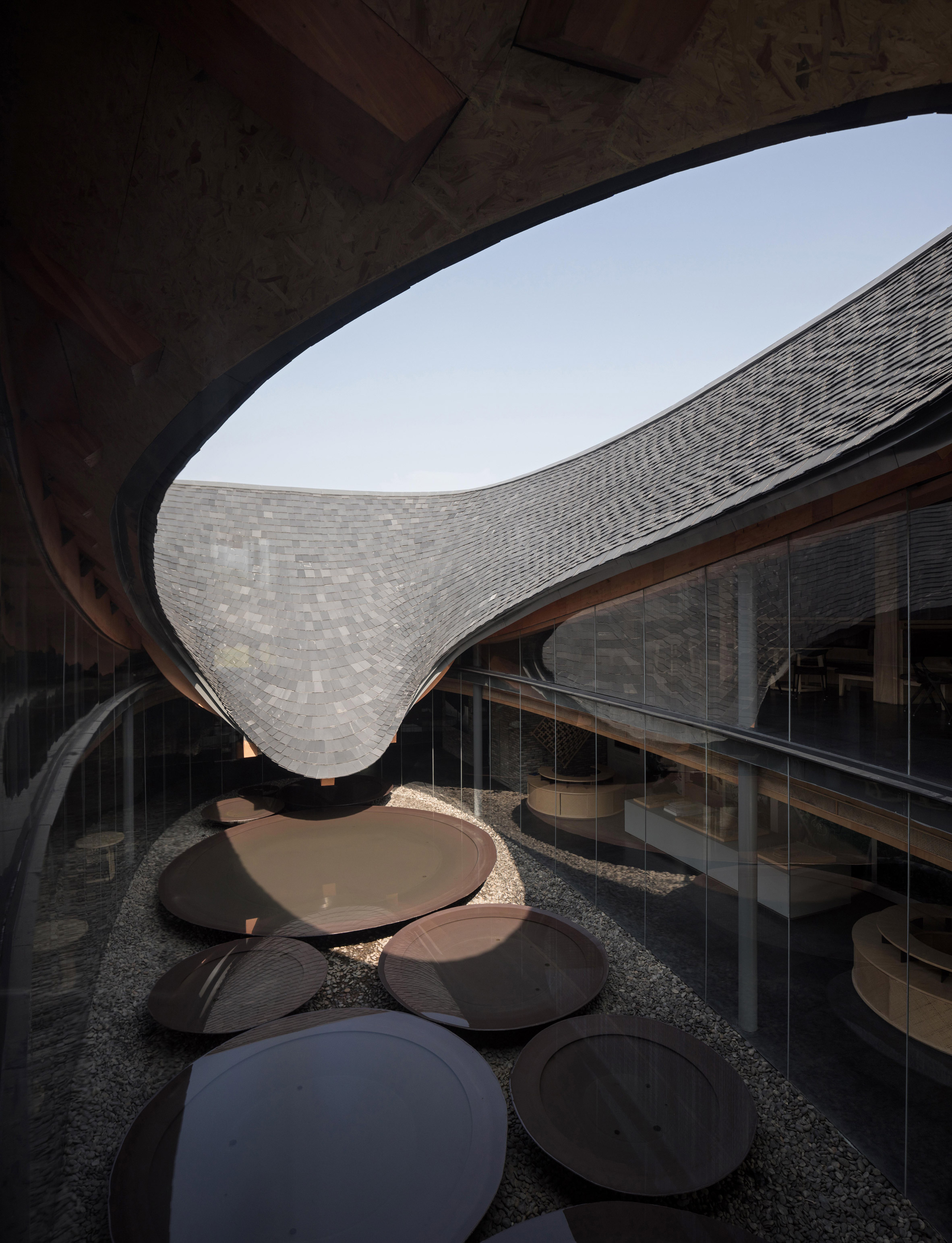
Tucked away within a typically rural setting and reached via a path that winds through the woods, Inkstone House will serve as a demonstration centre for the future redevelopment of the Linpan area.
The local government is collaborating with the Overseas Chinese Town Holdings Company on plans to integrate urban development within the traditional Linpan context.
“The whole architectural design starts from the binary relationship of the land,” said Yuan. “While inheriting the prototype of architectural typology, it tries to shape the new feeling of the oriental space.”
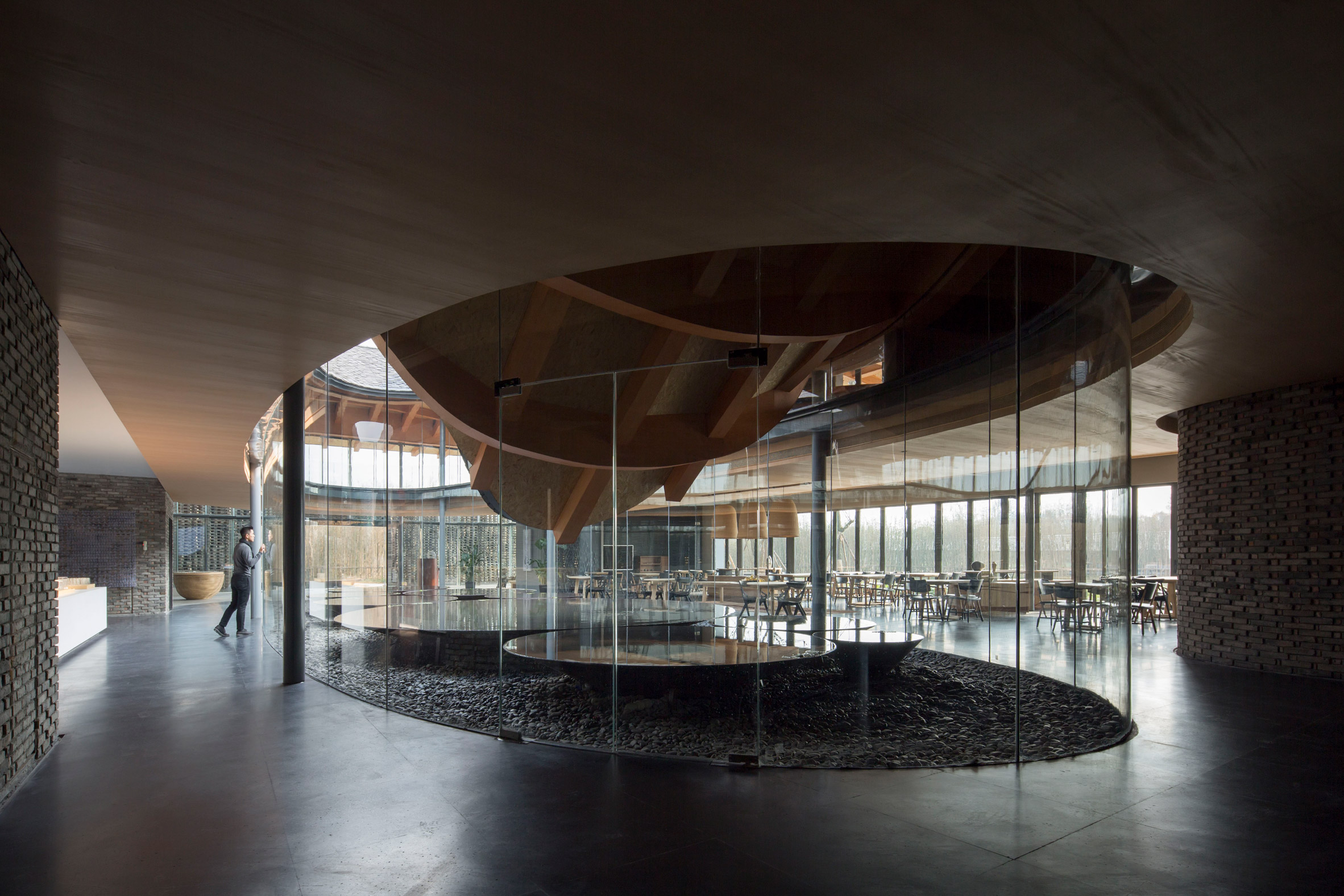
The brick structure is elevated above the ground, to preserve the natural ecology and habitat of local animals, and is topped with a slate roof featuring large overhanging eaves. The roof’s inner surface swoops down towards a central courtyard containing a cluster of reflecting ponds.
Inside the cultural centre, a reception, an exhibition area, a conference facility and corresponding auxiliary functions are accommodated on the ground floor.
A staircase sweeps upwards along the inside of the brick outer wall to a glazed circulation space that affords views across the landscape, as well as inwards onto the courtyard.
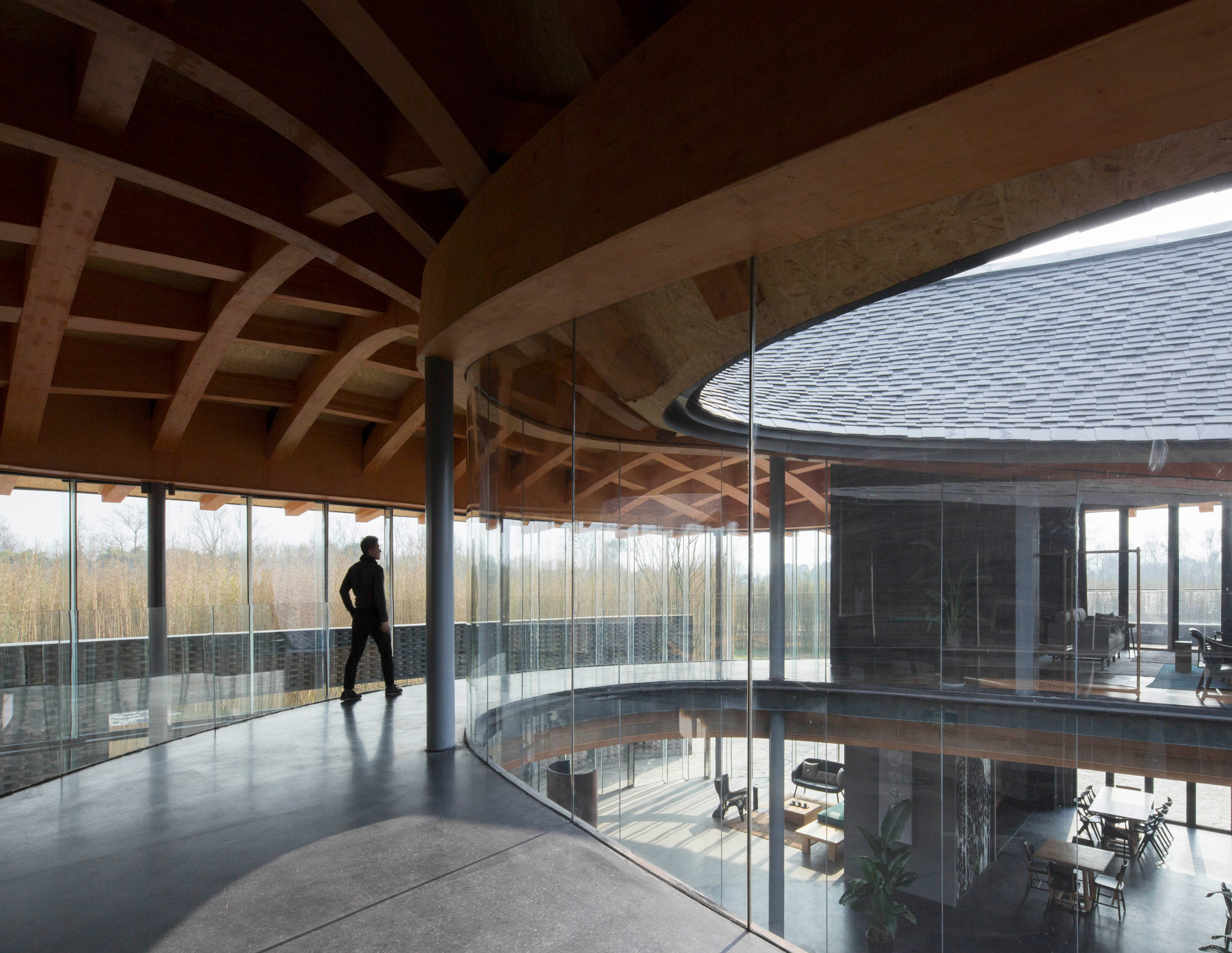
The first floor contains a series of multipurpose rooms that can be used for various functions such as tea tasting, music, dining and playing chess.
The main construction materials for the cultural centre are laminated wood, recycled brick and slate. These typical building materials are combined with digital fabrication methods to create distinctly contemporary forms.
Archi-Union Architects is known for applying experimental research in its projects, with a particular focus on “parametric construction, robot construction and green industrialisation.”
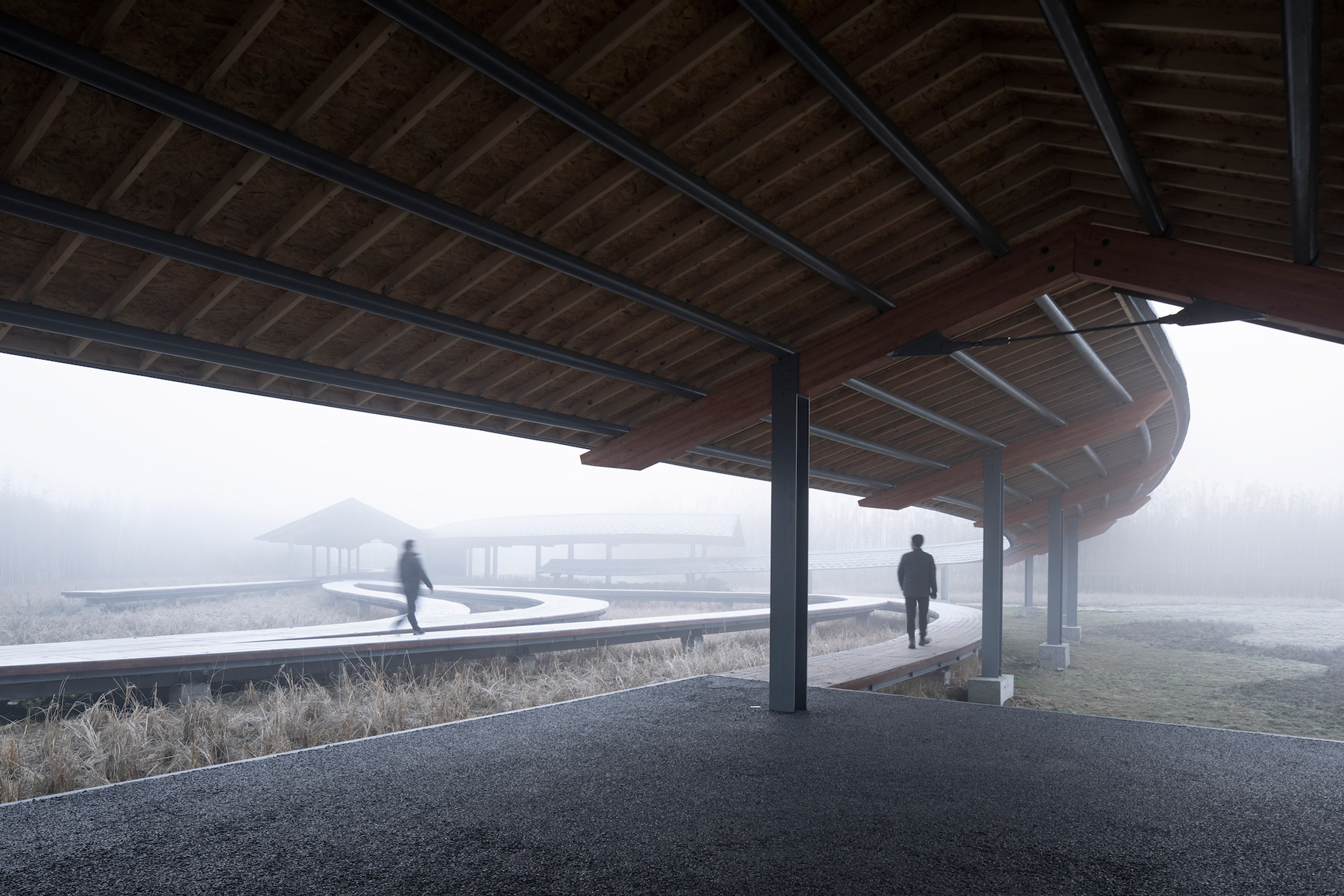
For Inkstone House, digital technologies were used to create the most structurally rational shape through a process involving “geometric form-finding calculation, structural performance simulation, iterative and optimisation processes.”
The building’s brick facade was largely prefabricated off site to reduce construction time. The 1,000-square-metre brick surface was divided into more than 400 units that were built by robots in a factory before being transported to the site and assembled.
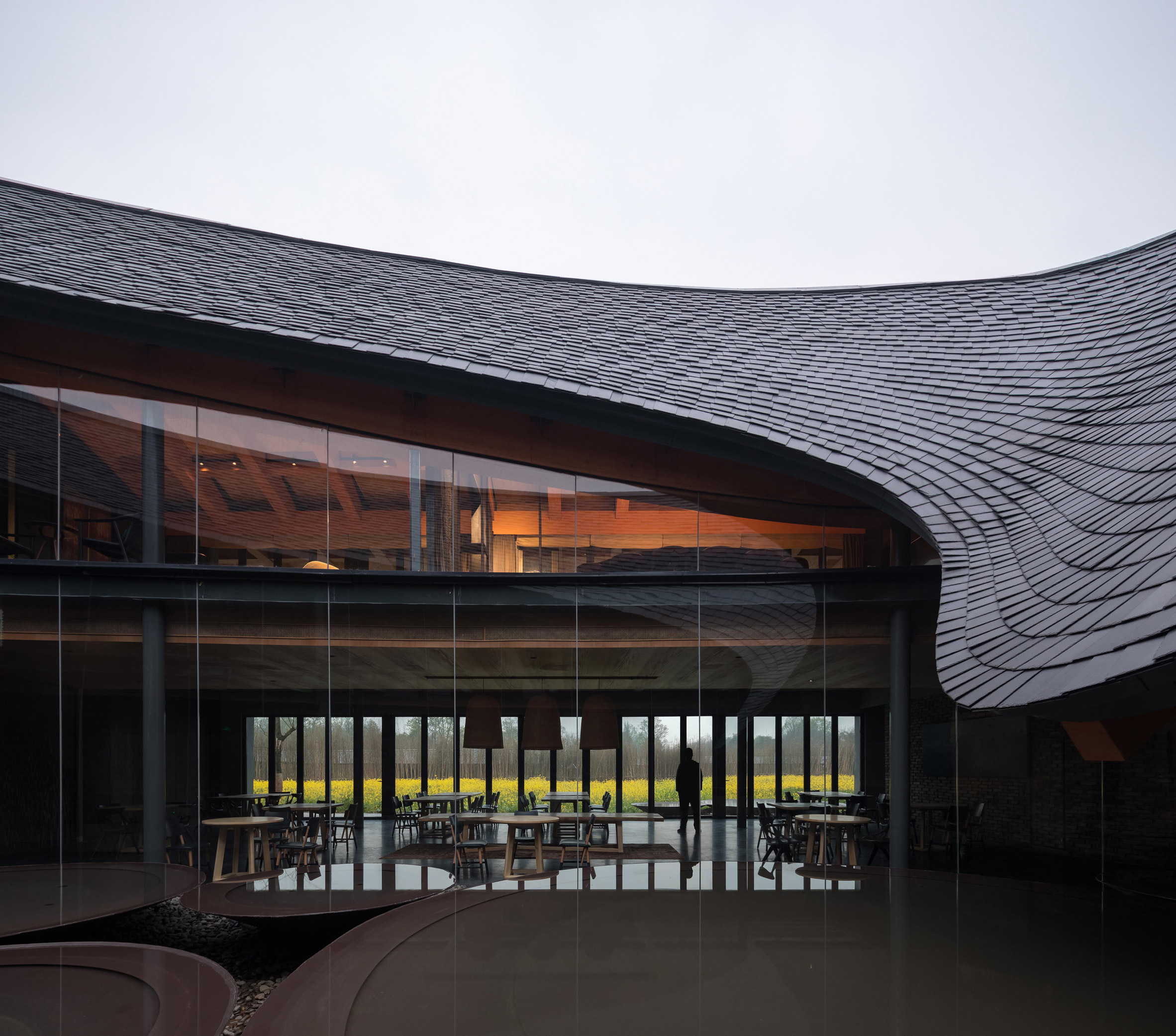
Archi-Union Architects previously used its “digital brick fabrication” process to construct a bulging brick facade at an art gallery in Shanghai, while robots also helped to build a conference centre for an artificial intelligence symposium event held in the city.
“We hope that the experimental construction of this project will introduce the concept of intelligence, greenness and industrialisation into new countryside and provide a new annotation for the future construction of beautiful rural areas in China,” Yuan concluded.
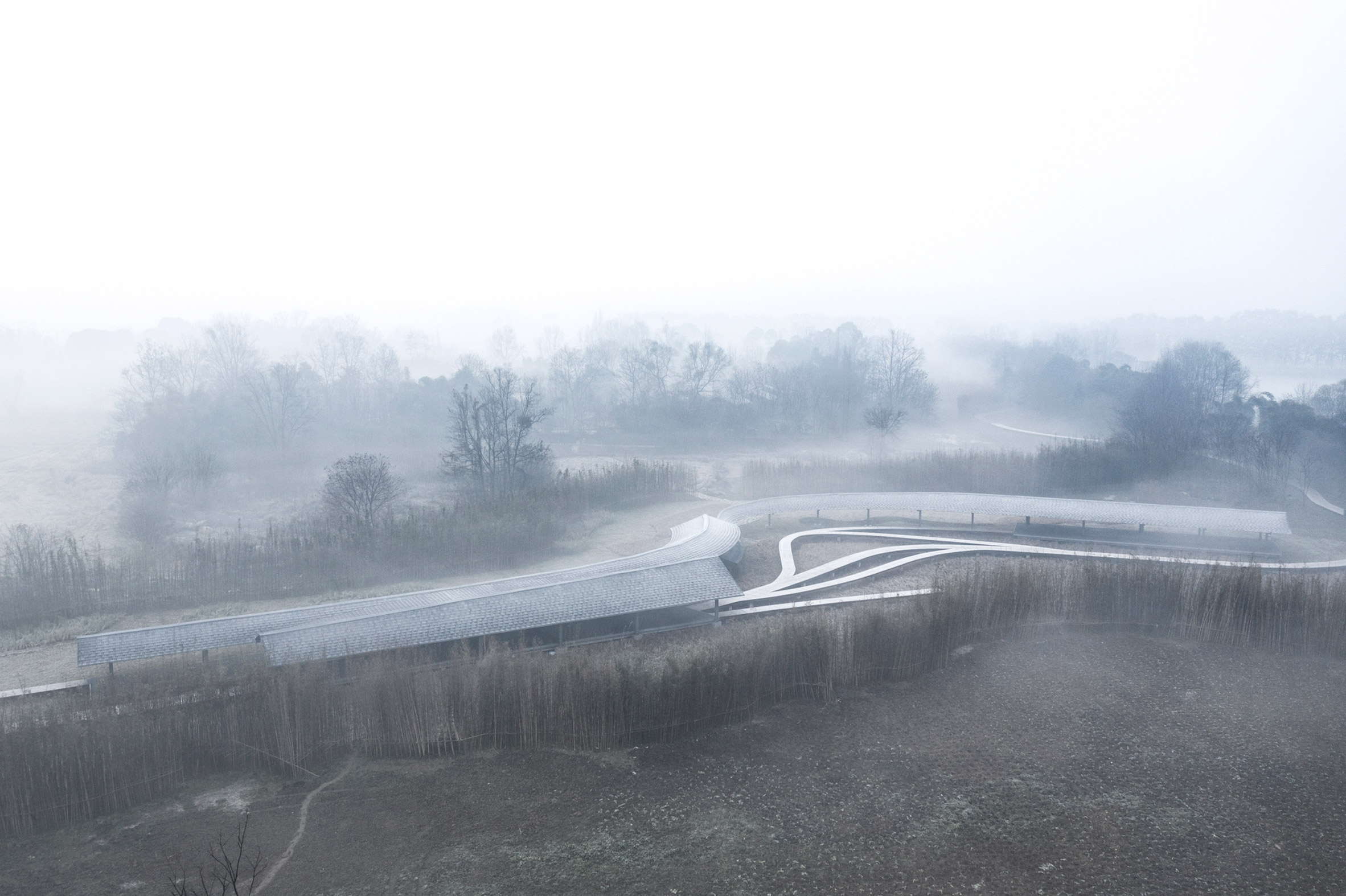
As well as Inkstone House, Archi-Union created two other buildings for the site. An entrance building boasts a pitched roof that evokes the local vernacular style. It will eventually house amenities including a tea kiosk and gift shop, as well as providing access to the raised walkway.
A service building for storing farm tools and machinery is located close to the cultural centre. The brick and earth-covered structure also houses spaces for workers to eat and rest.
Photography is by Yang Tianzhou unless otherwise stated.
Project credits:
Developer: Overseas Chinese Town Holdings Company(OCT Group)
Design: Archi-Union Architecture Design
Contractor: Sichuan Yi Neng Da Construction Engineering
Digital fabrication: Fab-Union Architectural Technology and Digital Fabrication
Landscape: Chengdu JZFZ Architectural Design Co
Principal architect: Philip F Yuan
Project architects: Alex Han, Xiangping Kong, Huajian Gu, Hao Chen, Chuanshi Zhao, Yuhao Fu
Interior team: Fuzi He, Ju Wang, Yifei Wang, Luwen Liu, Jingyan Tang, Mengmeng Cui
Structural engineers: Zhun Zhang, Tao Huang, Rui Wang, Zejiu Chen
MEP: Dawei Wei, Yong Wang, Ying Yu
Digital fabrication: Wen Zhang, Xuwei Wang, Yong Peng, Yong Zhang, Yancun Hao, Shengyang Xu
3D printing: Liming Zhang, Ce Li, Liangliang Liu, Jie Zhang, Shilong Dai
The post Archi-Union references calligraphy in curving tiled roof of Inkstone House cultural centre appeared first on Dezeen.
